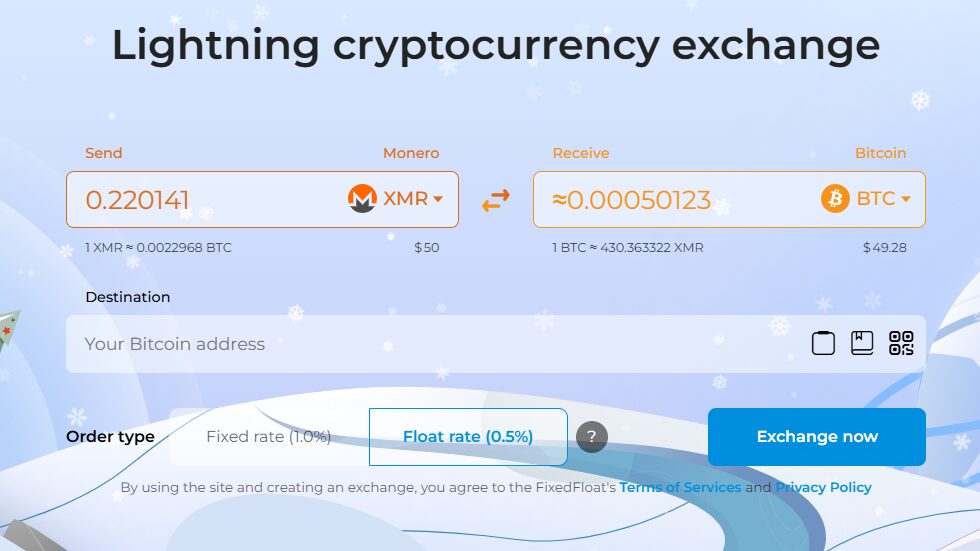
Bitcoin is often perceived as an “anonymous currency,” but in reality, all transaction history is recorded on the blockchain and can be traced. Governments and exchanges are tightening regulations, restricting mixing services and banning Tornado Cash, reducing Bitcoin’s anonymity.
If you are concerned about:
- Hiding Bitcoin transaction history from public view
- The safety of mixing services and alternative privacy solutions
This article will explain the most effective tracking evasion strategies to ensure maximum anonymity.
What You Will Learn
✅ Impact of Tornado Cash regulations on Bitcoin anonymity
✅ How mixing services work and their limitations
✅ The best techniques to erase Bitcoin transaction history
✅ Safe methods to avoid government regulations and blacklists
Let’s dive into the details.
Bitcoin’s Transparency and Blockchain Analysis

Bitcoin’s Transparency and Blockchain Analysis
Contrary to popular belief, Bitcoin is highly transparent. Every transaction is permanently recorded on the blockchain and can be accessed by anyone.
Using blockchain analysis tools like Chainalysis and Elliptic, authorities can trace transaction histories and identify the sender and receiver.
Common Situations Where Anonymity is Compromised:
- Using exchanges that require KYC (Know Your Customer) verification
- Reusing the same wallet address for multiple transactions
- Sending Bitcoin to known or flagged addresses
Thus, Bitcoin is not a truly anonymous currency—it is pseudo-anonymous.
How to Make Bitcoin Transactions Harder to Trace
Despite Bitcoin’s transparency, several methods can enhance anonymity:
- Use a New Wallet Address for Each Transaction
- Reusing the same address links all past transactions to your identity. Generating a new address each time breaks these connections.
- Use Mixing Services (With Caution)
- Mixing services blend your Bitcoin with others to obscure the original source. Popular services include CoinJoin (Wasabi Wallet, Samourai Wallet).
- Convert Bitcoin to Monero (XMR) and Back
- A highly effective strategy is to swap Bitcoin for Monero (XMR), transfer it between multiple wallets, and then convert it back to Bitcoin. Monero’s built-in privacy features make it impossible to trace transactions.
Limitations of Traditional Mixing Services
While mixing services offer some level of anonymity, they have notable drawbacks:
1. Government Regulations
In 2022, the U.S. government sanctioned Tornado Cash, prohibiting its use. Bitcoin mixing services may face similar restrictions in the future.
2. Exchange Blacklisting
Exchanges like Kraken and Coinbase reject Bitcoin deposits from mixing services to comply with anti-money laundering (AML) laws.
3. Blockchain Analysis Can Detect Mixing Patterns
Despite mixing, blockchain forensics can identify transactions with specific patterns, potentially linking them back to their original source.
Avoiding Regulation Risks and Blacklists
Since Bitcoin transactions are heavily monitored, achieving true anonymity requires careful action:
- Mixing services may become illegal or flagged
- Exchanges can blacklist specific Bitcoin addresses
- Transactions can still be linked through behavioral analysis
Thus, using Monero (XMR) and Lightning Network is the most effective approach.
How to Fully Anonymize Bitcoin with Monero and Lightning Network

Using Monero (XMR) allows you to break the traceability of Bitcoin transactions. The process involves:
- XMR Washing
- XMR Tunneling
- XMR-BTC Mixing
- Atomic Swap Mixing
These techniques prevent tracking by removing transaction history.
Why Monero Erases Transaction History
Monero is the most anonymous cryptocurrency because of these key technologies:
- Ring Signatures
- Mixes transactions with random past transactions, making it impossible to determine the true sender.
- Stealth Addresses
- Generates a unique, disposable address for each transaction, preventing tracing.
- Bulletproofs
- Uses zero-knowledge proofs to hide transaction amounts.
In Monero, the sender, recipient, and transaction amount are all concealed. Once BTC is exchanged for XMR, any link to the original Bitcoin is completely erased.
Steps to Anonymize Bitcoin Using Monero
- ①Convert BTC to XMR (Without KYC)
Use a KYC-free exchange like FixedFloat to swap BTC for XMR.
- ②Move XMR to New Wallets (Break Transaction Links)
Transfer XMR between 2-3 different wallets (e.g., Cake Wallet, Monero GUI Wallet).
- ③Convert XMR to Bitcoin via Lightning Network
Use FixedFloat to swap XMR for Lightning BTC.
- ④Move Lightning BTC to a New Bitcoin Wallet
Transfer Lightning BTC to Muun Wallet or BlueWallet, then convert it to regular Bitcoin.
After completing this process, your Bitcoin is completely untraceable.
Step 1: Convert BTC to XMR (Without KYC)

Use a KYC-free exchange like FixedFloat to swap BTC for XMR.
Enter the Monero address generated in Cake Wallet.

Step 2: Move XMR to New Wallets (Break Transaction Links)
Transfer XMR between 2-3 different wallets (e.g., Cake Wallet, Monero GUI Wallet).
At this point, sufficient anonymity has been achieved, so you can safely use FixedFloat to convert XMR back to BTC.

Step 3: Convert XMR to Bitcoin via Lightning Network
Passing through Monero alone completely erases BTC’s transaction history, but using the Lightning Network makes tracking even more difficult.
Use FixedFloat to swap XMR for Lightning BTC.
Step 4: Move Lightning BTC to a New Bitcoin Wallet
Transfer Lightning BTC to Muun Wallet, then convert it to regular Bitcoin. After that, send the on-chain Bitcoin to any wallet of your choice.
After completing this process, your Bitcoin is completely untraceable.
Key Takeaways for Fully Anonymous Bitcoin Transactions
✅ Bitcoin is not anonymous—its transactions are publicly recorded.
✅ Traditional mixing services have limitations and are being regulated.
✅ Monero (XMR) provides the best privacy by concealing transaction details.
✅ BTC → XMR → BTC effectively erases transaction history.
✅ Lightning Network further enhances anonymity by hiding transaction routes.
✅ Use KYC-free exchanges and new wallets for each step to maintain privacy.
✅ Following this method ensures maximum anonymity and bypasses blacklists.
By implementing these techniques, you can achieve near 100% anonymous Bitcoin transactions while avoiding regulatory risks.

comment